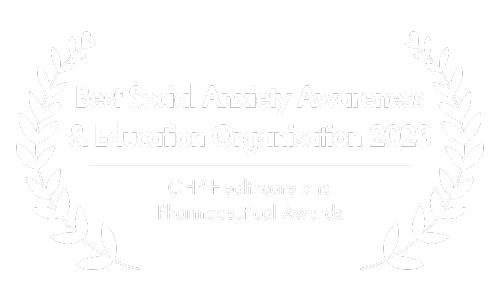Beyond the Surface: Exploring Psychodynamic Therapy for Social Anxiety
This article includes two recommendations for online therapy services. By using our links, you may receive a significant discount, and we may earn a commission, which supports the maintenance of our website.
In the realm of psychotherapeutic interventions for social anxiety disorder, an array of effective methods has emerged.
Among these approaches stands psychodynamic therapy – a modality that has undergone a transformative shift in its recognition and efficacy over the past decade.

Historically sidelined in the standard treatment recommendations for individuals grappling with social phobia, psychodynamic therapy (PDT) faced skepticism due to its lack of robust empirical evidence.
However, this narrative has evolved throughout last years, casting PDT in a new light.
Remarkably, psychodynamic therapy has proven its merit by demonstrating efficacy comparable to that of cognitive behavioral therapy (CBT) in addressing social anxiety disorder.
While CBT might yield marginally superior immediate results, PDT emerges as a viable long-term alternative, delivering outcomes on par with its more established counterpart.

Take a moment to consider the illuminating insights gleaned from a comprehensive long-term outcome study led by Leichsenring and colleagues in 2014.
The data unveils an intriguing convergence: when scrutinizing effects two years post-intervention, CBT and PDT exhibited nearly indistinguishable outcomes.
A visual representation, as depicted below, presents a comparative analysis of their effectiveness:
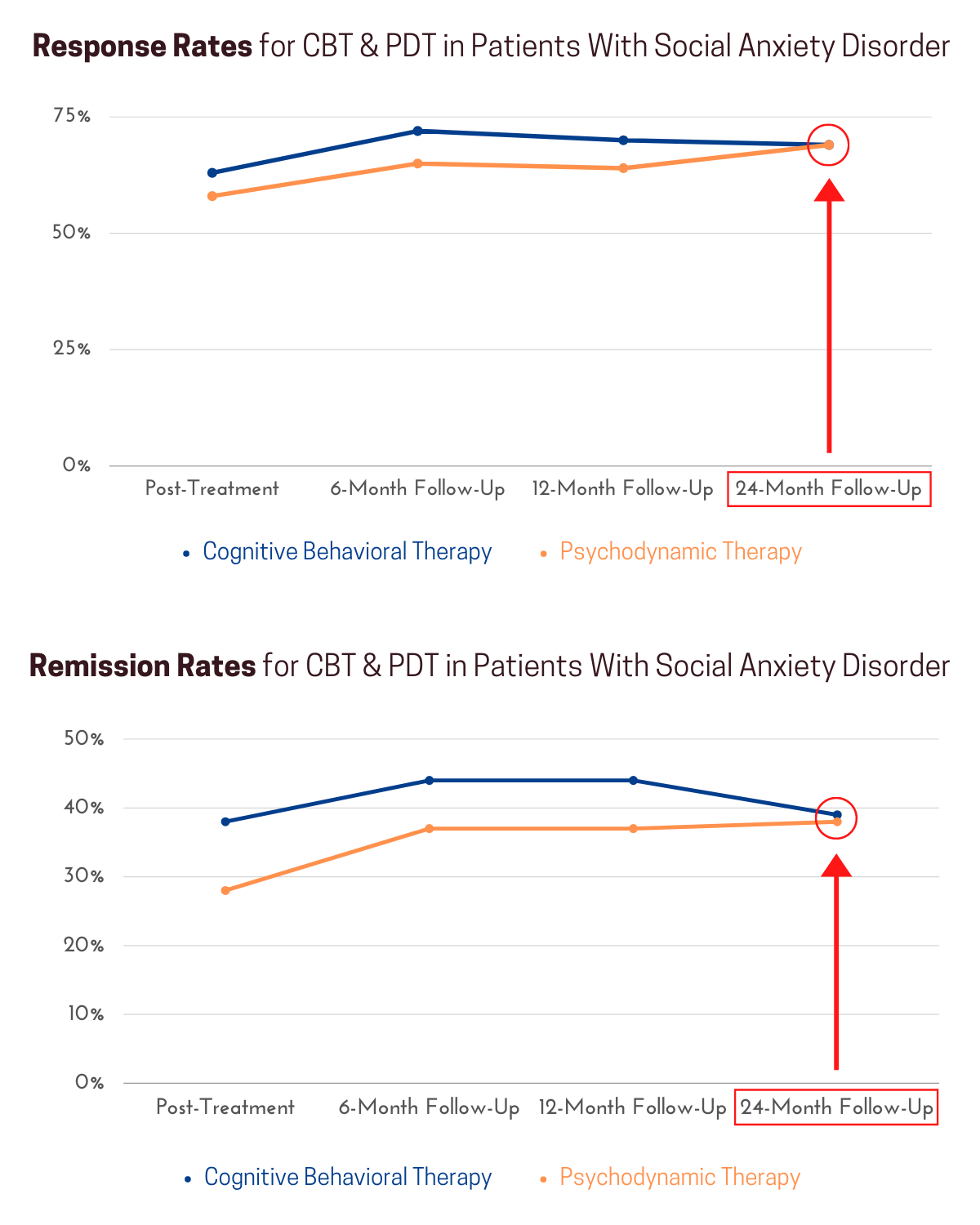
Despite the commendable success of cognitive behavioral therapy, a sizable portion of individuals grappling with social anxiety remain resistant to the conventional treatment trajectory.
For many, the prospect of gradual exposure to their dreaded situations proves daunting, inducing a reluctance to embark on, or adhere to, the treatment journey.

This disconcerting reality not only contributes to premature attrition from therapeutic engagement but also deters several from even embarking on it.
Herein lies the value of psychodynamic therapy – an avenue particularly promising for those averse to the conventional route and for those seeking a deeper comprehension of the roots of their affliction.
In the subsequent sections, we will delve into the underpinnings of this therapeutic approach.
By unraveling its unique perspective on the etiology and treatment of social anxiety, we aim to shed light on the nuances that make psychodynamic therapy a distinctive and efficacious pathway.

A. What is Psychodynamic Therapy?
Psychodynamic therapy analyzes the unique way in which a person relates to others. Based on psychoanalytic theory, it argues that interpersonal relationships are the driving force of the human psyche. Psychological insight in these mostly unconscious relational patterns can lead to symptomatic relief.
With its roots in psychoanalysis, psychodynamic therapy recognizes and embraces the enigmatic realm of the unconscious.
At the heart of this therapy is an emphasis on the therapeutic alliance, accompanied by a stance of analytical examination.
This combination of elements is the source of its alternative nickname: relational psychoanalysis.

Psychodynamic therapy is all about looking at how people relate to each other. It’s like looking beneath the surface of someone’s life to understand their important connections and how these connections affect how they think and feel.
Think about it as exploring the place where relationships grow – that’s what psychodynamic analysis does.
It asks questions like: Who are the important people in someone’s life? How much do these connections matter?
When two people interact, there’s a mix of thoughts and feelings that happen both on purpose and without them even knowing it. This is called “intersubjectivity“.
Imagine it like a hidden dance between people. In psychodynamic therapy, we use this dance to make things better.

Now, let’s talk about something called “object relations“. In this therapy, an “object” is just a person who means a lot to someone.
Figuring out the emotions tied to these important people gives us really helpful insights.
Picture a world of connections, like a bunch of colorful threads weaving together.
This is what psychodynamic therapy looks at – the mix of relationships that shapes who we are. It helps us understand why certain relationships have a big impact on our thoughts and feelings.
As we go deeper into this approach, an important question comes up: Why are these key relationships so important in psychodynamic therapy?

B. The Importance of the Bond in Psychodynamic Treatment
When we experience problems with the people that are most important to us, psychodynamic therapy speaks of a relational (also: dynamic) conflict. If the dynamic conflict is significant and remains unconscious or unresolved, symptoms may emerge as a result.
According to psychodynamic theory, the bond is the raw material of mental life and we are the result of passing through this relationship.

According to psychodynamic theory, these connections act as the foundation of our thoughts and feelings – they shape who we are. Think of it as the building blocks of our minds.
We owe our existence to these relationships; they’re like the blueprint of who we’ve become. Without them, we wouldn’t be here. Our identity is woven into our connections with others.
In essence, our lives are woven from the threads of these significant relationships. We are, in a way, reflections of the people we share these bonds with.
This is why the patient’s relationships are right at the heart of psychodynamic therapy.

C. Relational Theory & Its Impact on Social Anxiety Disorder
Psychodynamic theory draws from several influential figures, with three pivotal authors shaping its relevance to understanding social anxiety. These authors delve into the developmental origins of social anxiety and offer insights into the role of early relationships.
1. John Bowlby (British psychiatrist & psychoanalyst)
Bowlby introduced the concept of attachment style, highlighting the significance of the initial relationship with a mother or primary caregiver. He posited that this early bond shapes our patterns of connection throughout life.
Do we actively seek close relationships, or do we instinctively create emotional distance? Are we driven by fears of abandonment, or do we nurture trust in others?
If the foundational relationship, especially with our primary caregiver, lacks security, we might develop an insecure attachment style. This link to insecurity has been associated with various psychological difficulties, including social anxiety.
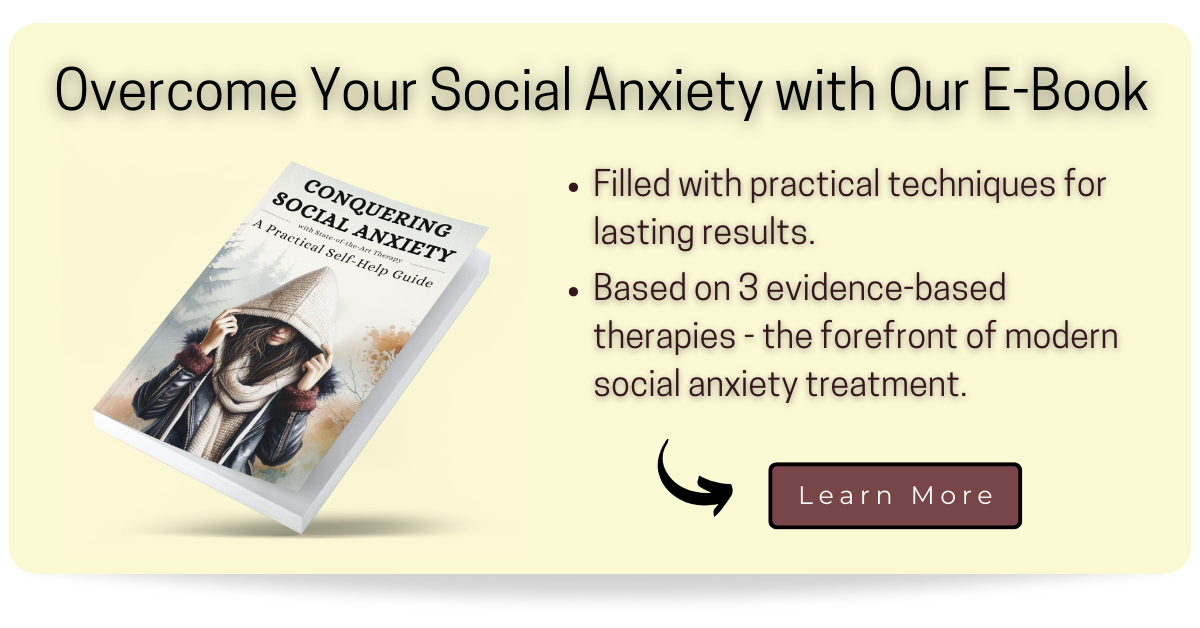
2. Donald Winnicott (British pediatrician & psychoanalyst)
Winnicott echoed similar sentiments, underscoring the paramount role of the mother or primary caregiver in a child’s psychological development. He introduced the notion of the “good enough mother“.
Winnicott’s premise was that perfection isn’t necessary; what matters is meeting the child’s needs sufficiently. A shortfall in this provision might lead the child to believe that their true self is unacceptable, paving the way for the emergence of a false self.
This false self acts as a defense mechanism to shield the child’s genuine identity and can contribute to social anxiety.

3. Melanie Klein (Austrian psychoanalyst)
Klein spotlighted a crucial developmental hurdle in childhood: the realization of separation from the mother or primary caregiver. This recognition brings forth the awareness that the child and mother are distinct entities.
As this understanding emerges, the child confronts a range of emotions – love and hate – toward the mother. The child projects their destructive aspects onto the mother, resulting in fear of punishment, termed the “paranoid position“.

The child’s eventual acceptance of the mother’s dual nature brings forth feelings of guilt and the desire to mend their imagined wrongs – the “depressive position“.
If this process of imagined repair falters, it can fuel social anxiety as the child perceives the external world as hostile and persecuting.
Collectively, within the realm of psychodynamic theory, a consensus emerges about the potent influence of early relationships, particularly with the mother or primary caregiver, in shaping the psychological bedrock of an individual.

Common childhood experiences often reported by individuals with social anxiety (Baeza, 2007) include:
- The belief that love, approval, or attention must be earned, rather than given unconditionally.
- Insecure and unpredictable relationships with primary caregivers, in contrast to a safe and stable environment.
- Lack of emotional support and exposure to critical family dynamics, as opposed to nurturing care.
- Experiences of abandonment during critical stages of childhood, fostering a fear of forming attachments.
These early bonds lay the groundwork for an individual’s psychological trajectory, though it’s crucial to note that this foundation can be reshaped through intervention, such as psychodynamic therapy.
As we delve deeper into this exploration, it becomes clear how psychodynamic therapy intervenes to modify and transform these foundational relationships, offering hope for those struggling with social anxiety.

D. Psychodynamic Therapy: A Path to Treating Social Anxiety
Much like its counterpart, psychoanalysis, psychodynamic therapy encourages individuals to put their psychological experiences into words.
This process is non-directive, recognizing that the individual holds the potential to unlock their own cure.
Yet, this potential knowledge largely resides in the unconscious. Herein lies the role of the therapist: to assist the individual in accessing this hidden realm and making sense of their experiences.
At the heart of this therapeutic journey lies the therapeutic relationship—a dynamic partnership that propels transformation.
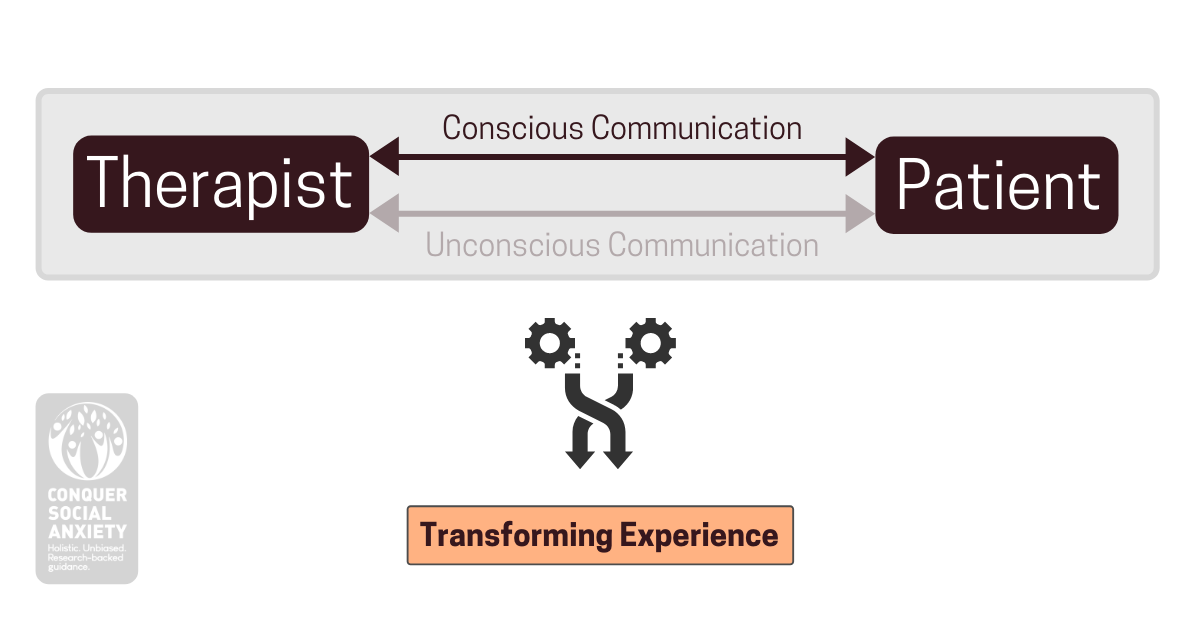
Throughout the treatment, patient and therapist delve into the relational experiences that underlie the emergence of social anxiety.
Simultaneously, they closely observe how the patient’s current relationships evolve as the journey unfolds.
In many ways, the therapeutic relationship becomes a platform for offering the patient corrective experiences, addressing their emotional needs that surface during the course of therapy.
Unlike symptom-focused cognitive behavioral therapy, traditional psychodynamic therapy possesses a certain ascetic quality.
It doesn’t solely seek to remedy specific psychological issues; instead, it fosters self-awareness, paving the way for transformative experiences.

However, considering its demonstrable relief, psychodynamic therapy is now increasingly utilized to alleviate symptoms.
There exist brief interventions (lasting 10-36 sessions) that exhibit consistent success in reducing social anxiety (Bögels et al., 2014; Johansson et al., 2017; Leichsenring et al., 2013).
Among the tangible changes that often surface during treatment are:
- Improved communication skills
- Enhanced conflict resolution
- Strengthened assertiveness
- Decreased social isolation
However, the essence of psychodynamic treatment lies in the internal shifts experienced by the individual.
These personal changes are unique and not universally applicable. Yet, it’s noteworthy that most participants in these trials experience substantial reductions in social anxiety.

A pivotal component of psychodynamic therapy is the analytical perspective individuals develop while navigating the therapeutic process.
As they scrutinize their important relationships in detail, this outlook often persists post-treatment.
The ability to identify and address interpersonal tensions and conflicts within the therapeutic relationship can be extended to the individual’s significant relationships beyond the therapy setting.
This is why psychodynamic therapy often yields enduring effects.
Now, let’s delve into one of the concepts frequently employed during treatment.

E. The Core Conflictual Relationship Theme (CCRT)
A concept commonly employed by psychodynamic therapists to uncover and address problematic relationship patterns is the Core Conflictual Relationship Theme (CCRT; Luborsky, 1984).
This idea revolves around recognizing detrimental patterns that surface during interactions with others.
The CCRT comprises three distinct components: a patient’s desire, the responses of one or more others, and the patient’s subsequent reactions.
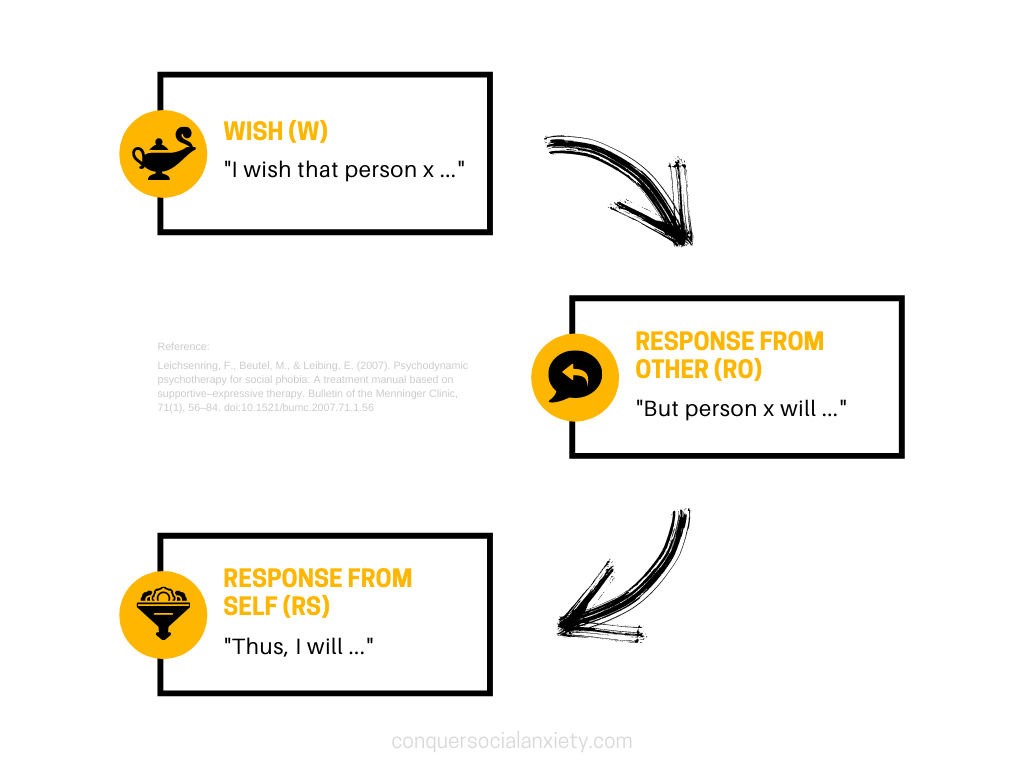
For instance, let’s consider a CCRT example for someone grappling with social anxiety (Gabbard, 1992, as cited in Leichsenring, Beutel, & Leibing, 2007):
“I wish for validation from others (W). Yet, I fear they’ll ridicule me (RO). This leads to shame and a deep-seated apprehension about social situations, prompting me to avoid exposure (RS, symptoms of social phobia).”
Remember, while the example provided is common, it’s vital to recognize that the CCRT of individuals dealing with social anxiety can differ widely.
Crucial to understand is that the CCRT becomes active when someone with social anxiety perceives threats externally and internally.
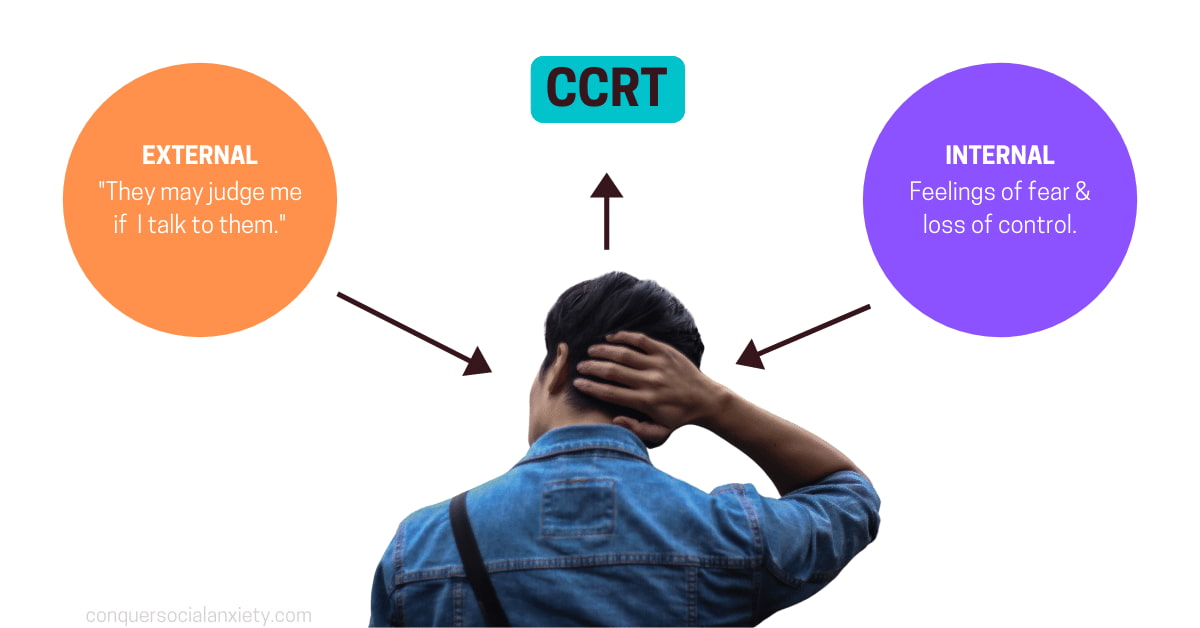
In the course of therapy, the therapist and patient collaborate to unearth the patient’s distinct CCRT, closely intertwined with the symptoms of social anxiety.
Subsequently, this specific relational pattern takes center stage in the therapeutic journey.
When a strong therapeutic bond is established, the patient and therapist can pinpoint how the CCRT manifests in the therapeutic environment.
By this meticulous analysis, the central conflictual relationship theme becomes amenable to transformation, potentially yielding a reduction in social anxiety.
F. Distinguishing Traditional Psychoanalysis & Modern PDT
While psychoanalysis serves as the foundation for various psychodynamic approaches, distinct characteristics set them apart. Let’s explore these differences in a more accessible manner:
Traditional Psychoanalysis
- The main focus is on the inner drives and impulses of the person seeking help.
- Other people are seen as tools to satisfy personal needs.
- Relationships are primarily viewed as vehicles to attain pleasure or fulfillment.
- Personal growth occurs through managing and satisfying inner desires.

(Other) Psychodynamic Approaches
- The key emphasis lies in understanding how individuals connect with others.
- People and their relationships are interdependent, each contributing to the other’s satisfaction.
- Relationships are the building blocks of our identity; they shape who we are.
- Personal development unfolds as individuals engage with others and build meaningful connections.
This differentiation highlights that while psychoanalysis underpins the wider realm of psychodynamic approaches, nuances emerge in how they interpret the interplay between individuals and their relationships.

G. Is Psychodynamic Therapy the Right Fit for You?
By this point, you’ve gained insight into how psychodynamic therapy presents a valid solution for those grappling with social anxiety.
However, it’s important to recognize that while PDT offers promise, it might not automatically align with your specific circumstances.

To break it down: If you’re seeking a method that zeros in on addressing symptoms, equips you with specific techniques, and promises swift outcomes, CBT could be a more suitable avenue.
Nonetheless, PDT offers a more profound journey, delving into the core origins of your social anxiety rather than merely skimming the surface.
It’s worth noting that some CBT therapists argue that distorted perceptions, irrational thoughts, and unhelpful avoidance behaviors constitute the foundational cause of social anxiety. From this standpoint, CBT tackles the underlying triggers of SAD.

As challenging as it may be to grasp, anxiety often roots itself in interpersonal strains, conflicts, and complexities.
Identifying these and reshaping your relational dynamics can wield a transformative effect on your symptoms.
Furthermore, as demonstrated in the aforementioned studies, PDT has the potential to yield rapid improvements.
Ultimately, the decision regarding whether a psychodynamic approach aligns with your needs rests with you. If you’re dealing with social anxiety, the paramount step is embarking on a therapeutic journey.
Whether you choose PDT, CBT or any other effective treatment method is only of secondary importance.

H. Recommendation: Online PDT for Social Anxiety
In recent times, the realm of therapy has expanded to encompass both traditional in-person sessions and convenient online alternatives.
This development offers individuals struggling with social anxiety the flexibility to access treatment in a manner that aligns with their preferences and needs.
The allure of engaging in therapy from the comfort of your own space, coupled with the eradication of geographical constraints, makes online therapy an appealing choice.

Recent research underscores the efficacy of online therapy, demonstrating its equivalence to in-person therapy for treating social anxiety, particularly when employing certain therapeutic approaches.
Both CBT and PDT administered online have exhibited improvements in social anxiety symptoms, irrespective of patient preference. The strength of the therapeutic alliance plays a pivotal role in these outcomes (Lindegaard et al., 2020).
Should you have access to a qualified therapist nearby who specializes in your preferred therapeutic approach, that’s an excellent avenue to explore.
However, if this isn’t logistically feasible or if the thought of in-person sessions triggers overwhelm, online therapy emerges as a valid and pragmatic alternative.
A key benefit for people with social phobia is the ability to do online therapy via live chat, which can make the step into therapy easier for many.

When considering online therapy, it’s paramount to ensure that the platform you choose places a premium on your privacy and security.
Additionally, confirming the credentials and experience of therapists in treating social anxiety is imperative.
Seek out reviews and testimonials from individuals who have utilized the service to gauge its effectiveness.
When seeking effective online therapy options that cater to PDT for social anxiety, we recommend the following platforms:
Option 1: BetterHelp
For individuals searching for a broader range of therapeutic strategies beyond the conventional CBT, “BetterHelp” stands as an exceptional platform to consider.
BetterHelp offers an extensive selection of therapeutic modalities, including psychodynamic therapy. It allows you to designate PDT as your chosen therapeutic path and ensuring a tailored match with a suitable therapist.
With BetterHelp, you pay monthly, get one live session per week and unlimited chat contact with your therapist – and you can get started in no time.
Click the link below to get started, and you’ll be prompted to provide insights into your current situation and therapist preferences. This step enables you to tailor the selection process to match your specific therapy needs.

Options 2: Talkspace
Another noteworthy platform is “Talkspace“, designed to cater to a range of therapeutic needs. It also allows you to access qualified therapists delivering psychodynamic therapy (among other options).
What sets Talkspace apart is its integrated psychiatry service, providing an avenue for individuals contemplating the integration of medication into their therapeutic journey. By the way, you can click here to read our full guide on pharmacological treatment for social anxiety.
With Talkspace, you pay monthly, get one live session per week and unlimited chat contact with your therapist – and you’re up and running in no time.
Discover the possibilities offered by Talkspace through the link provided below. Our link grants you access to a special $80 discount code.

I. Conclusion: Embracing the Depths of PDT
Psychodynamic therapy underscores the fundamental idea that our very essence is woven from the threads of interpersonal connections.
Amidst the diverse perspectives that shade this approach, a collective understanding emerges about the pivotal role of the child-mother bond in early childhood.
This foundational relationship shapes our psychological blueprint, exerting a profound influence throughout our lives.
However, the enigma of why social anxiety takes root is a complex puzzle that evades easy answers and sweeping generalizations. Unraveling this mystery, tailored to each individual, stands as one of the aims of psychodynamic therapy.
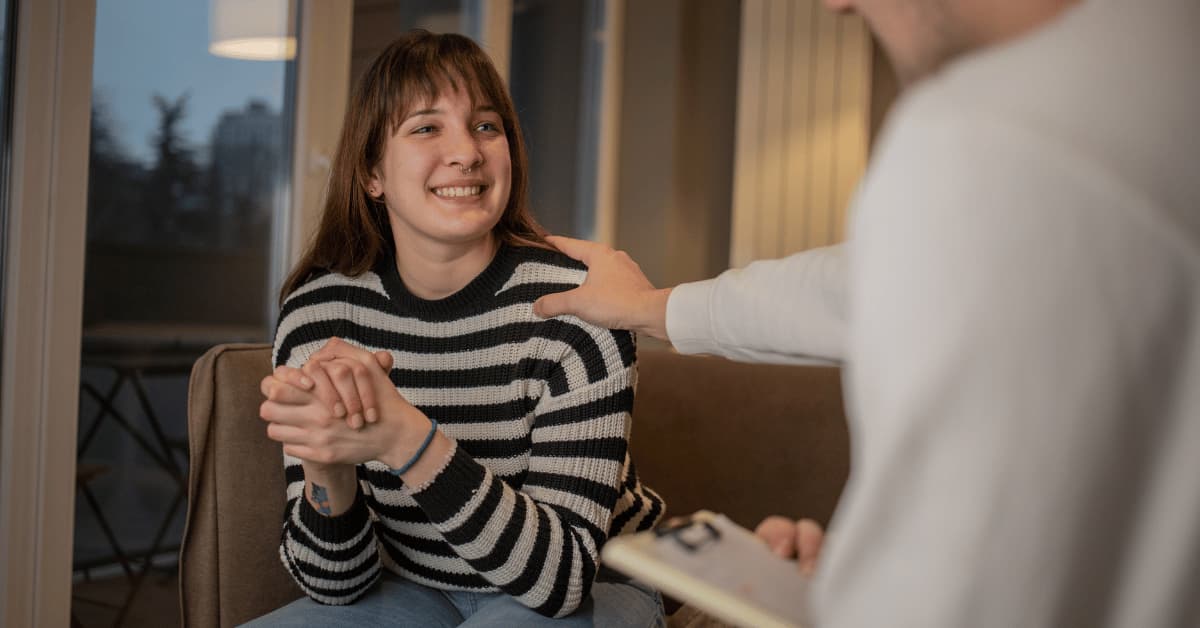
The crux of psychodynamic treatment lies in the dynamic exchange between patient and therapist, a relationship that forms the bedrock for transformation.
The journey of treatment navigates the terrain of managing and coexisting with anxiety. This metamorphosis is facilitated by delving into the distinct tapestry of our interpersonal connections and comprehending how they mold our experiences.
Psychodynamic therapy emerges as an efficacious solution for addressing social anxiety, particularly in the long term.
The type of therapy you pursue and the therapist you select play a pivotal role in shaping the effectiveness and endurance of your therapeutic journey.

To delve deeper into therapy choices available for addressing social anxiety, we strongly encourage you to explore our comprehensive guide by clicking here.
This resource not only outlines diverse therapy options but also provides insights into their scientific efficacy, assisting you in making an informed and empowered decision.
For a more holistic perspective, encompassing not only therapy but also medication and self-help avenues, we invite you to access our comprehensive treatment guide for social anxiety by clicking here.
Baeza Velasco, Carolina. (2007). Tratamientos eficaces para el trastorno de ansiedad social. Cuadernos de neuropsicología, 1(2), 127-138. Recuperado em 21 de agosto de 2023, de http://pepsic.bvsalud.org/scielo.php?script=sci_arttext&pid=S0718-41232007000200004&lng=pt&tlng=es
Bögels, S. M., Wijts, P., Oort, F. J., & Sallaerts, S. J. (2014). Psychodynamic psychotherapy versus cognitive behavior therapy for social anxiety disorder: an efficacy and partial effectiveness trial. Depression and anxiety, 31(5), 363–373. https://doi.org/10.1002/da.22246
Gabbard G. O. (1992). Psychodynamics of panic disorder and social phobia. Bulletin of the Menninger Clinic, 56(2 Suppl A), A3–A13.
Johansson, R., Hesslow, T., Ljótsson, B., Jansson, A., Jonsson, L., Färdig, S., Karlsson, J., Hesser, H., Frederick, R. J., Lilliengren, P., Carlbring, P., & Andersson, G. (2017). Internet-based affect-focused psychodynamic therapy for social anxiety disorder: A randomized controlled trial with 2-year follow-up. Psychotherapy (Chicago, Ill.), 54(4), 351–360. https://doi.org/10.1037/pst0000147
Leichsenring, F., Beutel, M., & Leibing, E. (2007). Psychodynamic psychotherapy for social phobia: a treatment manual based on supportive-expressive therapy. Bulletin of the Menninger Clinic, 71(1), 56–83. https://doi.org/10.1521/bumc.2007.71.1.56
Leichsenring, F., Salzer, S., Beutel, M. E., Herpertz, S., Hiller, W., Hoyer, J., Huesing, J., Joraschky, P., Nolting, B., Poehlmann, K., Ritter, V., Stangier, U., Strauss, B., Stuhldreher, N., Tefikow, S., Teismann, T., Willutzki, U., Wiltink, J., & Leibing, E. (2013). Psychodynamic therapy and cognitive-behavioral therapy in social anxiety disorder: a multicenter randomized controlled trial. The American journal of psychiatry, 170(7), 759–767. https://doi.org/10.1176/appi.ajp.2013.12081125
Leichsenring, F., Salzer, S., Beutel, M. E., Herpertz, S., Hiller, W., Hoyer, J., Huesing, J., Joraschky, P., Nolting, B., Poehlmann, K., Ritter, V., Stangier, U., Strauss, B., Tefikow, S., Teismann, T., Willutzki, U., Wiltink, J., & Leibing, E. (2014). Long-term outcome of psychodynamic therapy and cognitive-behavioral therapy in social anxiety disorder. The American journal of psychiatry, 171(10), 1074–1082. https://doi.org/10.1176/appi.ajp.2014.13111514
Lindegaard, T., Hesslow, T., Nilsson, M., Johansson, R., Carlbring, P., Lilliengren, P., & Andersson, G. (2020). Internet-based psychodynamic therapy vs cognitive behavioural therapy for social anxiety disorder: A preference study. Internet interventions, 20, 100316. https://doi.org/10.1016/j.invent.2020.100316
Luborsky, L. (1984). Principles of Psychoanalytic Psychotherapy: Manualfor Supportive-Expressive Treatment. New York, Basic Books.
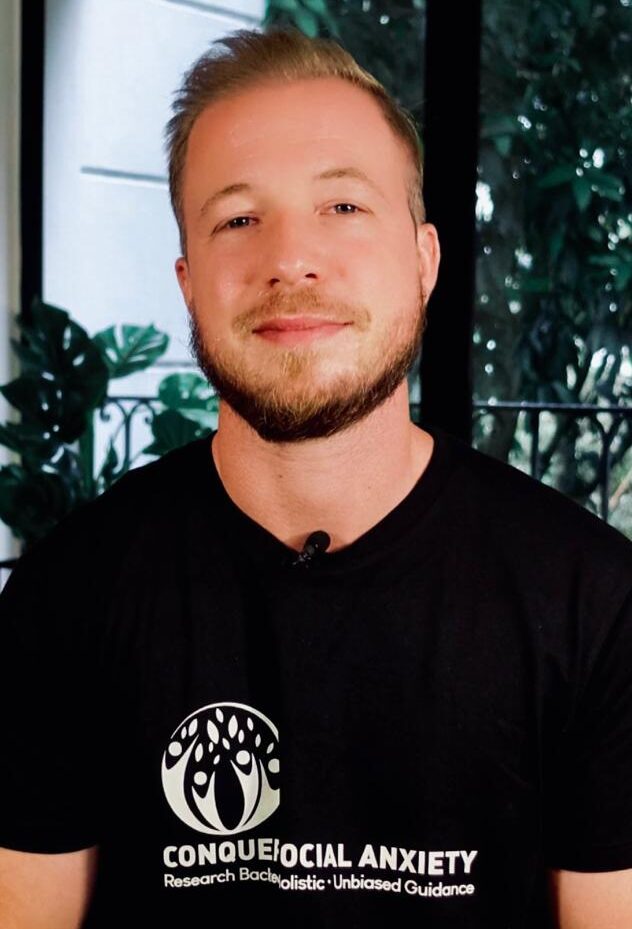
About the Author: Martin Stork
Martin is a professional psychologist with a background in physical therapy. He has organized and led various support groups for people with social anxiety in Washington, DC and Buenos Aires, Argentina. He is the founder of Conquer Social Anxiety Ltd, where he operates as a writer, therapist and director. You can click here to find out more about Martin.








